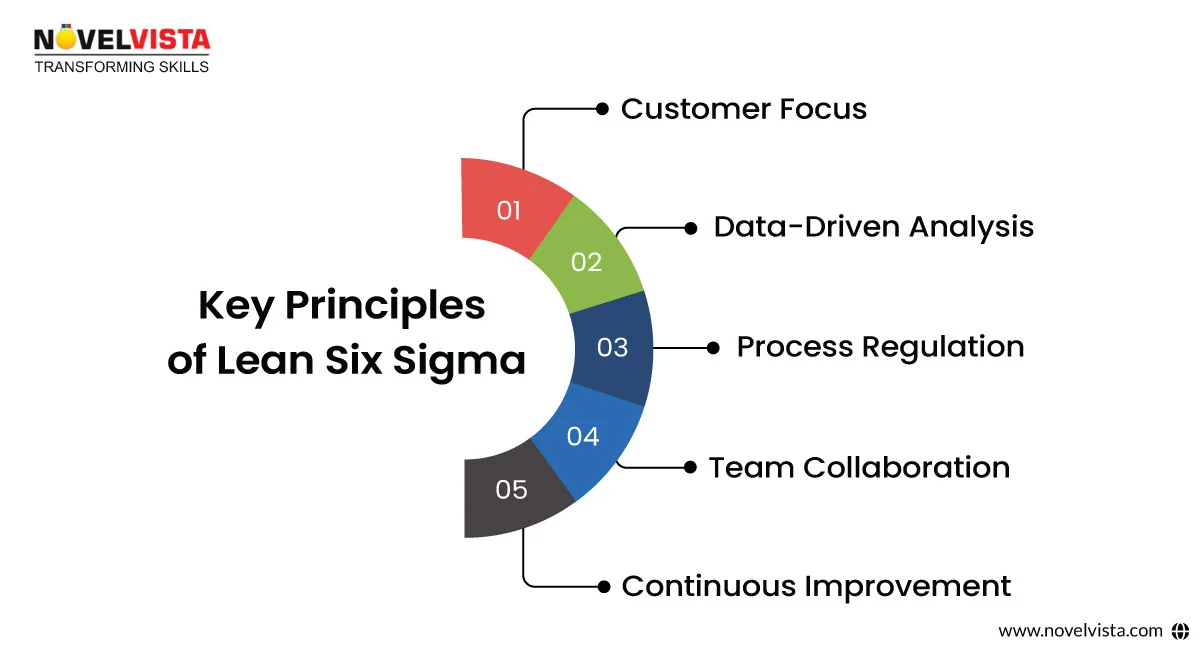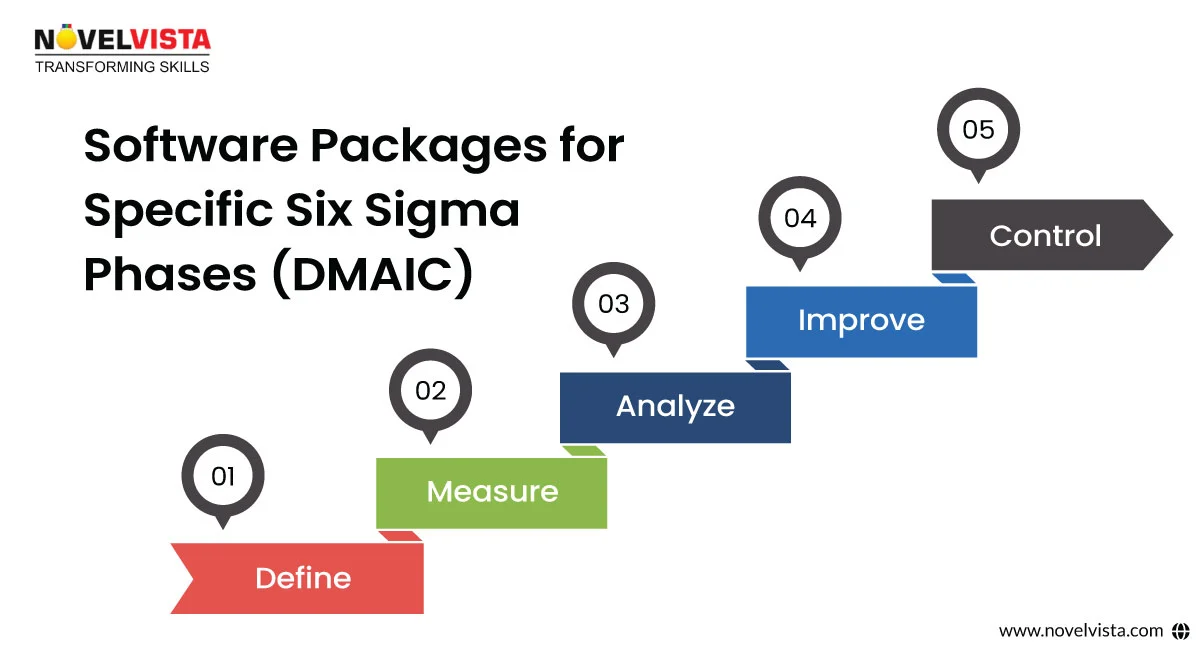Putting resources into the software to help your Six Sigma activities is a successful method to ensure that you capitalize on the approach. Setting up a structure for development makes it more straightforward for individuals all through the association to take an interest in and viably manage ceaseless improvement endeavors.
Associations that influence Six Sigma software gather more open doors for development, actualize more arrangements, and see a higher ROI for Six Sigma. There are various arrangements available that were either evolved as Six Sigma board instruments or repurposed accordingly, so we figured it may be useful to recognize the absolute most significant abilities that you should search for while assessing this sort of innovation.
Six Sigma is a detailed, data-driven technique used to find and remove mistakes in any process. It’s based on the DMAIC process—Define, Measure, Analyze, Improve, Control—which provides a structured path to address inefficiencies.
Why is Six Sigma effective?
By combining with Six Sigma Software, organizations can streamline their projects, track performance, and validate outcomes with ease.

The principles behind Six Sigma remain constant across industries and use cases. At its heart, it’s about:
Lean Six Sigma Softwarecombines the principles of Lean (waste reduction) and Six Sigma
(defect reduction) with digital intelligence. These tools usually include:
As outlined in the Lean Six Sigma Overview, the right software fosters faster cycle times and fewer errors, making it invaluable to organizations aiming for operational excellence.
Yes, Six Sigma can absolutely co-function with Agile! More tech organizations are using Lean Six Sigma to minimize bugs, improve deployment speed, and elevate user satisfaction.
Here’s how it applies in real scenarios:
When it comes to choosing a Software for Six Sigma, there are some star options that continue to deliver exceptional value in both corporate and industrial settings. These platforms are designed to improve process visibility, foster collaboration, and boost efficiency across all Six Sigma project stages:
Each of these options allows for better execution of Lean Six Sigma methodologies and combines well with various enterprise systems.
There’s no same solution for all Six Sigma platforms. These tools fall into special categories:
Each type serves has different roles—if it's a Black Belt running a Kaizen event or a Green Belt handling daily operations.

Each phase of the DMAIC cycle can be improved using specific software functionalities:
This pairing makes sure that the software isn't just flashy—it’s functional and strategically aligned.
In today's fast-paced world, mobile accessibility to Six Sigma’s Software is a must. Thankfully, there are several apps that put improvement tools right in the palm of your hand:
These apps are not just useful—they make it easier to apply Six Sigma techniques on the go, improving real-time decision-making across departments.
Let’s review what makes some of these tools stand out:
Let’s talk money. Pricing for Six Sigma platforms generally falls into these buckets:
Not every organization has the budget for enterprise solutions. By good fortune, open-source tools can provide a powerful entry point into Six Sigma:
When supported by professional training like the Lean Six Sigma Green Belt + Black Belt, these tools can rival any paid platform.
Any arrangement you consider should make it simple for each individual in the association to recognize and record open doors for development. This isvital to the Six Sigmaapproach and ought to be at the core of the arrangement you pick.
Cloud-based softwarethat is accessible 24 x 7 and on any gadget is the most legitimate arrangement choice. It will make it feasible for individuals to report what they discover from any place they happen to be and for chiefs to react to circumstances regardless of whether they don't occur to be in the workplace.
The arrangement ought to permit clients to include any records or pictures that may be pertinent to the open door for development, and it ought to make a review trail that will store the subtleties of what befalls every open door after some time.
When an open door for development is caught in the framework, there ought to be a characterized work process for what occurs right away.Who will assess and organize the chance?By what method will the individual who announced the open door realize what's going on with it?
The best Six Sigma arrangements have savvy cautions and warnings with the goal that the individuals who willsurvey and support openingsare advised promptly when another one is entered. They would then be able to appoint related assignments to the correct individuals and groups.
When dealing with an undertaking, extra cautions advise fitting faculty when assignments are finished or due dates are missed. This quickens the pace of progress.
Six Sigma brings a proof-based, logical way to deal with business management. Each cycle is just changed after a thorough assessment and a pre-characterized improvement cycle like PSDA or DMAIC. It just bodes well, in this way, to carry that equivalent accuracy to estimating the effect of the progressions that are actualized.
YourSix Sigma softwarearrangement should assist you with detailing the effect of yourimprovement work regarding cost decrease, expanded income, improved consumer loyalty, diminished process duration, or whatever other measurements are imperative to your business. This will help legitimize the interest in Six Sigma programs, keep representatives spurred, and drive chief commitment.
NumerousSix Sigma strategiesinclude representation. Value stream planning, Kanban, A3, Kaizen sheets, and others all assist individuals in a flash to comprehend complex data in a moment. Search forSix Sigma softwarethat takes visual management to the next level, enabling clients to set up dashboards and reports that rapidly mention to them what they have to know.
Heads ought to have the option to effectively survey the strength of Six Sigma in the association. Project managers should see the progression of work and perceive detours right away.
Six Sigma requires collaboration. The methodology takes care of most when it turns out to be important for the way of life and goes beyond a specific device or strategy to supply each representative with a solid sense that they are crucial to the achievement of the association, and steady improvement is a key duty of each and every person. Six Sigma software arrangements with worked-in-progress broadcasting capacities help strengthen the significance of Kaizen. This kind of acknowledgment is additionally intensely propelling and something that representatives reliably tell specialists they need more from businesses.
Six Sigma can significantly change an association to improve things; however, it doesn't generally do so. Achievement needs chief help, interest in important instruments and assets, and the ability to grasp steady change. Six Sigma software doesn't ensure results; however, it puts the association on the correct balance to quicken improvement, settle on shrewd choices, and gain from past understanding. Choosing one with solid abilities in every one of these territories will help guarantee that you get an answer and an accomplice that can smooth your way toward better business in terms of the measurements you care about most.
✅ Get certified by experts
✅ Hands-on projects and real-world applications
✅ Boost your career in quality management & operations
Investing in the right Six Sigma Software isn’t just a technical decision—it’s a strategic move that defines how effectively your organization can find, analyze, and remove inefficiencies. From mobile apps to full-scale BI platforms, from open-source tools to premium packages, there’s a solution for every stage of your Six Sigma journey.
With abilities designed to match the DMAIC process, tools to perform real-time statistical process control (SPC), and support for both beginners and experts, these platforms are key enablers of successful continuous improvement initiatives.
If you're serious about quality, efficiency, and agility—digital tools are your best allies. Head over to Novelvista to explore industry-recognized certifications, expert-led training, and curated resources that will empower you to lead with data and drive measurable change.
Confused about our certifications?
Let Our Advisor Guide You